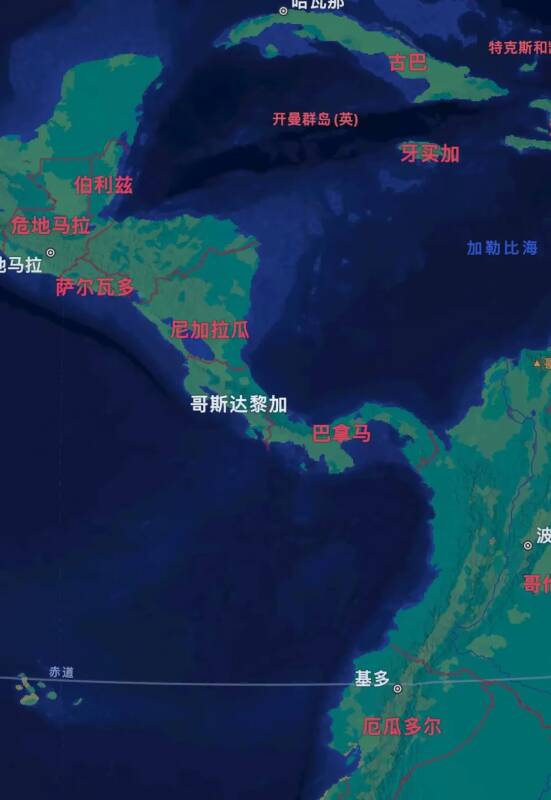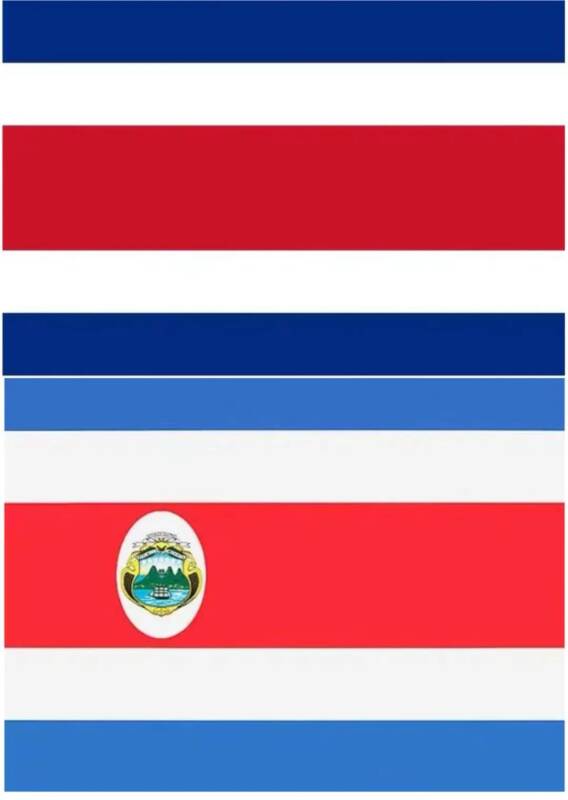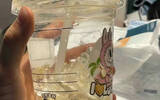Costa Rican coffee beans| Introduction to the entry selection series of washed coffee beans in Talazhu production area
Costa Rica Costa Rica
In Latin America, there is one country that is the first country in the world without an army, but it is socially stable and economically prosperous, and it is also called the Switzerland of Central America. This country is The Republic of Costa Rica.

Costa Rica is located in the Central American isthmus, belonging to North America, facing the Caribbean Sea to the east, the Pacific Ocean to the west, Nicaragua to the north and Panama to the southeast, with a land area of 51100 square kilometers. A Costa Rican from Spanish, meaning "fertile coast". The flag of the country is made up of five parallel wide strips of blue, white, red, white and blue from top to bottom, of which red is twice as wide as blue and white. represents hot pillows and blood shed for independence, blue and white come from the colors of the original Central American federal flag, blue represents sky, opportunity, idealism and perseverance, while white represents peace, wisdom and happiness. The national emblem is painted on the left side of the red part. The national flag is used by the government.

Costa Rica is one of the countries with the richest biological species in the world, with nearly 5% of the world's species, nearly 30% of the country's land is a national park or nature reserve, and the national forest coverage is 52.38%. The country's coast is plain, the central part is isolated by rugged mountains, the climate is tropical and subtropical, the rainy season is from April to December, the dry season is from December to April of the following year, the climate in the central valley is pleasant, the temperature is between 15 and 26 ℃, and the country has more than 200 volcanoes, the volcanic ash gives the soil rich minerals, coupled with mild and suitable temperature, abundant Rain Water, make the country's agriculture developed. Is an important exporter of pineapple, banana and coffee in the world.
Coffee producing area
There are seven coffee producing areas in Costa Rica, namely: the Western Valley (Valley Central Occidental), the Central Valley (Valley Central), the Tarazu (Tarrazu), the Sanshui River (Tres Rios), Orosi (Orosi), Brunca (Bronka) and Turrialba (Duli Alba). Almost all of these areas are distributed in the central mountains.
Central Valley (Valley Central): the Central Valley is the first coffee growing area in Costa Rica and the core of the country's coffee industry, accounting for about 15 per cent of total production. The central valley, with an altitude of 1200m to 1600m above sea level, belongs to a tropical plateau climate with an annual precipitation of 3000mm, and the temperature is more pleasant than that in low altitude areas. The coffee season is from November to March of the following year. There are three high-altitude volcanoes Irazu, Barva and Poas in the producing area, and the coffee cultivation near these three volcanic sites provides fertile volcanic ash soil rich in minerals, with excellent geographical and climatic conditions for coffee cultivation.
Western valley (Valley Central Occidental): the western valley is located on the medium slope of the central mountains, planting 1000m~1200m above sea level, accounting for 25% of the country's output, with two volcanoes in the east and west, so there is fertile volcanic soil. Because it is close to the coastline and blown by the Pacific airstream, the average annual humidity is as high as 81%, and the rainfall is abundant, but it is dry and wet in the rainy season, and there is plenty of sunshine in the dry season. So this producing area can be dried by the sun (other areas are mainly dried by machines). Coffee season from November to March of the following year.
Sanshui River (Tres Rios): Sanshui River is the smallest coffee producing area in Costa Rica, with an elevation of 1000-16000 meters. Like the Central Valley, it has the fertile soil environment provided by the Erazu volcano, which produces a lot of world-famous coffee. It is called "Bordeaux" by coffee lovers, and it is produced from December to March of the following year.
Orosi: it is produced in the narrow valley east of San Jose and has been growing coffee for a hundred years. Coffee season is from September to December.
Brunca: Brenka is planted at an altitude of 800m to 1200m. The flavor of coffee is relatively common in famous producing areas, but it is also an important producing area in Costa Rica. From August to January of the following year, coffee production accounts for 20% of the total output of the country.
Duli Alba (Turrialba): the altitude of Duli Alba is 600m to 900m above sea level, where the dry and wet separation of the two seasons is not very obvious, coffee trees will appear multiple flowering periods, which will greatly affect the picking of coffee. Such geographical conditions and climate are not ideal for the development of planting, so high-quality coffee in this area is rare.
Tarazu (Tarrazu): Tarazu, located in the south of San Jose, the capital of Costa Rica, is the most famous producing area in Costa Rica and one of the major coffee producing areas in the world, accounting for 35% of the country's coffee production. The Tarazhu producing area is 1200m-1900m above sea level, which is the highest in Costa Rica. The climate here is humid, the precipitation is abundant, and the nearby volcanoes also provide fertile volcanic ash soil, which is a unique place for growing coffee, from November to March of the following year. At present, Qianjie Coffee has a variety of Costa Rican coffee beans. Mozart, Bach, Strawberry Sugar and Costa Rican selection of coffee beans are all from Tara Zhu.
Kaddura Catutta, Kaduai Catuai
Kaddura, a variant of Bourbon, was discovered on a plantation in the Brazilian state of Minas Gerais between 1915 and 1918. Kaddura's name comes from Guarani, which means "small". On coffee plants, the leaves are green, the berries are concentrated closely, the distance between leaf nodes is short, the fruit is mainly red, the size of coffee beans is average and oval, but it is slightly larger than Kaduai, and the overall tree shape is smaller, so it can be planted densely and the yield is higher, but its production cycle is shorter than other varieties, so it is suitable for planting at high altitude. But it is vulnerable to leaf rust, nematodes and berry diseases.
The Catuai variety is produced by the Sao Paulo Institute of Agronomy (IAC) in Campinas, Brazil, and is a hybrid between New World Mundo Novo and Kaddura Caturra. On the Kaduai coffee plant, similar to Kaddura, the branches are smaller, the leaves are green and slightly curly, the fruits are closely intertwined, the fruit is mainly red, and the coffee beans are oval in size, but smaller than Kaddura. The overall tree shape is smaller, so it can be planted densely. The yield is good, it is suitable for planting at high altitude, but it is vulnerable to leaf rust, nematode and berry disease.
Qianjie Coffee Costa Rica selection Tarazhu Coffee Bean producing area: Tarazhu Coffee producing area altitude: 1500 meters Variety: Kaddura, Kaduai treatment: washing flavor: orange nutty toffee
The Tarazhu beans of Qianjie Coffee are washed and moderately roasted. Qianjie will use the proportion of V60JEL 15, 92 ℃ water temperature for cooking, the entrance will have a slight acidity, with sweet orange, nut and honey flavor, as well as toffee sweetness, soft and smooth taste.
Important Notice :
前街咖啡 FrontStreet Coffee has moved to new addredd:
FrontStreet Coffee Address: 315,Donghua East Road,GuangZhou
Tel:020 38364473
- Prev

Exports are strong! Brazil exports nearly 4.3 million bags of coffee in March
Recently, international coffee futures prices rose, but also led to many countries domestic coffee spot prices, of which Robusta has reached the highest level since October 1994, so Vietnam's local price industry rose to 101 million to 104 million VND/ton (29,200 - 30,000 yuan)
- Next

How many ice does Luckin Coffee have? It all depends on the number of workers!
▲ Click attention| The temperature in the coffee workshop of boutique coffee culture magazine is gradually warming up every day, and more and more consumers are starting to buy iced drinks, which has also increased sales of Ruixing iced drinks, which have launched new products one after another. At the same time,"Ruixing Duo Bing" has once again become the focus of complaints among consumers, but no matter how dissatisfied customers are,
Related
- What effect does Italian American coffee with filter paper have? Will coffee taste better if it is put on filter paper at the bottom of the powder bowl?
- What is the color difference in coffee beans? What are the characteristics of honey processed coffee beans? Why are the anaerobically treated coffee beans uneven in color?
- How does novice Xiaobai quickly get started and make coffee? Newbies learn to make coffee by hand and share the specific steps and process process!
- Costa tea has a shelf life of 100 years?! Expert: Unable to verify
- It's a huge uproar! American milk addition was rejected by Manner employees?!
- Mocha pot coffee bean recommendations| How fine and how much powder should be used for grinding? What parameter ratios do I need to use to make milk with Mocha pot coffee?
- What are the characteristics of the world's top ten coffee beans treated with Costa Rica honey? How to make black honey kadura from Tarazhu Pilon Processing Plant taste good?
- How to make deep-roasted coffee? What grinding water temperature does authentic Jamaica Blue Mountain No. 1 coffee use to brew it well?
- Selected high-grade rose summer coffee flavor tasting guide Why Panama rose summer has the aroma of flowers and fruits
- What equipment does a novice Xiaobai need to buy to learn to make coffee? Filter cup electronic scale bean grinder manual flushing pot purchase guide

